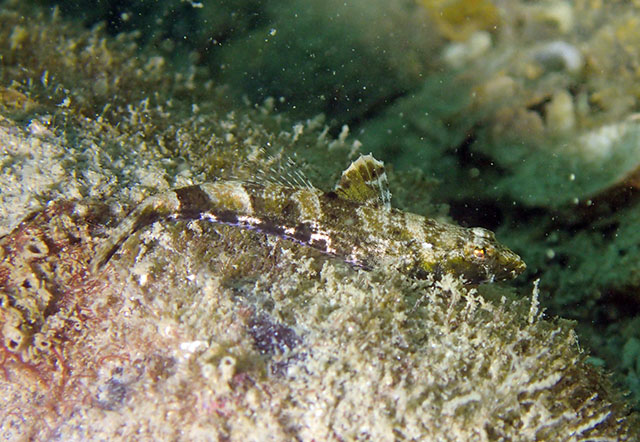| Gobiidae (Gobies), subfamily: Gobiinae |
| 19.8 cm TL (male/unsexed) |
|
benthopelagic; freshwater; brackish; marine; depth range 0 - 3 m, amphidromous |
| Indo-Pacific: south to East London, South Africa (Ref. 2798). Western Central Pacific: Guam (Ref. 35720). Often confused with the more common Glossogobius giuris. |
|
Dorsal spines (total): 7-7; Dorsal soft rays (total): 9-9; Anal spines: 1-1; Anal soft rays: 8-8. Body dark brown to black, with longitudinal rows of small black spot; 2-3 saddles on back and side; black 1st dorsal fin; dark crossbands on pelvic fins (Ref. 2798). |
| Inhabits intertidal areas, estuaries, lagoons and coastal rivers. Common in mangroves (Ref. 4343, 44894). Occasionally penetrates the lower reaches of freshwater streams (Ref. 44894). |
|
Least Concern (LC); Date assessed: 02 July 2016 Ref. (130435)
|
| harmless |
|
Specimens were collected from Kiga creek, Ambacan River at Baybay, and San Jose, Dulag, Leyte in 1993 (Ref. 7223). Reported from Taal Lake (Ref. 12165, 13446), Laguna de Bay and is an important food fish found throughout the country. Museum specimens collected in 1984 from various localities, LRS-84133 (Ref. 13460). In range Ref. 4343. |
Source and more info: www.fishbase.org. For personal, classroom, and other internal use only. Not for publication.

